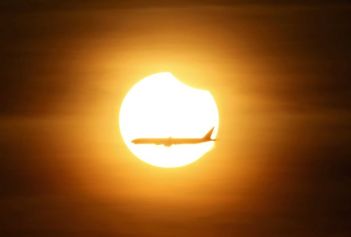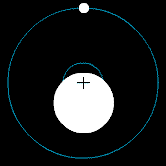
We live in tragic and troubled times. Open any newspaper: you’ll find it dominated by pages of woes — economic, political and personal. Little wonder, therefore, that astronomical news is more likely to be broken online than in print.
Though perhaps, just maybe, that could soon be about to change.
According to Spiegel Online (website of the popular German magazine), a credible source has revealed to it the discovery of a planet orbiting our next closest star, Proxima Centauri. Apparently, the European Southern Observatory (ESO) is planning to go public with this news before the end of August.
To read the Spiegel Online article, Click Here.
Planets outside our Solar System are technically known as extra-solar planets, or “exoplanets” for short. The first was discovered in 1995, and since then, the existence of more than three thousand exoplanets has been confirmed.
However, the vast majority are deemed incapable of supporting life as we know it. Indeed, many discovered exoplanets are gas giants orbiting close to their star — nicknamed “hot Jupiters.” But the latest find is said to be a rocky world, orbiting its star within the so-called Goldilocks Zone: the region of space where conditions are just right; neither too hot, nor too cold. Based on what we know, such worlds are able to sustain liquid surface water, making them excellent candidates for life.
Earth-like worlds have been spotted before, but never as close as this latest one. At a distance of just four light-years, a probe could get there within a generation. Indeed, such a plan (with billionaire backing) has already been announced!
Earlier this year, Professor Stephen Hawking unveiled Project Starshot, whereby probes could be accelerated to 25% of light-speed using current technology — reaching the neighbourhood of Proxima Centauri in just 20 years. Financial giants Yuri Milner and Mark Zuckerberg are the first to pledge investment.
Once there, signals and data could be passed to and fro with a delay of four years. That may seem an eternity, but after an initial wait of four years following arrival, there would be a constant stream of information from another star system — including photographs of a new, potentially habitable world.
If that world were to harbour some kind of life, it wouldn’t elude us for long.
When you consider how tiny the stars appear from Earth, it may seem incredible (and frankly unbelievable) that planets can be seen orbiting them. But it’s true. Here’s two of the methods used by astronomers. The first is the transit method.

In the above image, you can see the start of a total solar eclipse. The Moon is just beginning to move across the face of the Sun. As it does so, a corresponding ‘dip’ in sunlight is recorded on the ground. At the moment of totality, when the Moon covers the entire face of the Sun, day turns to night as the sky becomes dark. And you don’t need to be a scientist to know that something huge is passing between our world and the Sun… obviously!
The same logic lies at the heart of the transit method. When an exoplanet passes between our world and a star, a tiny dip in the brightness of that star occurs, and this is recorded by extremely sensitive equipment. If the dip follows a regular pattern, that can only be explained by the presence of a planet orbiting the star, just as our own planet orbits the Sun. Hence, the transit method works by measuring mini-eclipses, so to speak.
The second method is the astrometry (or “wobble”) method. This provides a way of seeing exoplanets indirectly, when they don’t appear to pass in front of their star from our perspective on Earth. Basically, as any planet orbits a star, it feels the star’s immense gravity at work, swinging it around in circles. But this effect works both ways. The planet’s gravity also exerts a slight pull on the star — causing the star to circle, too.

The above animation is exaggerated, but it demonstrates the idea. With sensitive equipment, it’s possible to measure the star’s movement, which astronomers often describe as a wobble. If the wobble is both permanent and consistent, it can only be explained by the presence of a planet, tugging on the star as it goes around.
The planet orbiting Proxima Centauri was found using the wobble method. A bit of clever scientific thinking then allowed for its most likely distance, mass and composition to be deduced from the strength of its tug. It’s likely that the next step will be renewed efforts to employ the transit method, by which further precious data could be obtained.
And so, you can expect to be hearing more about a new planet that’s (1)Earth-like, (2)orbiting within its sun’s Goldilocks Zone, and (3)within reach of our probes. That is, unless the rumour turns out to be false. Possible, but unlikely.
We live in tragic and troubled times. But these days are also the most exciting and fascinating in the history of our species.
I, for one, feel fortunate to be alive.
UPDATE: The rumour has now been confirmed. Click Here
